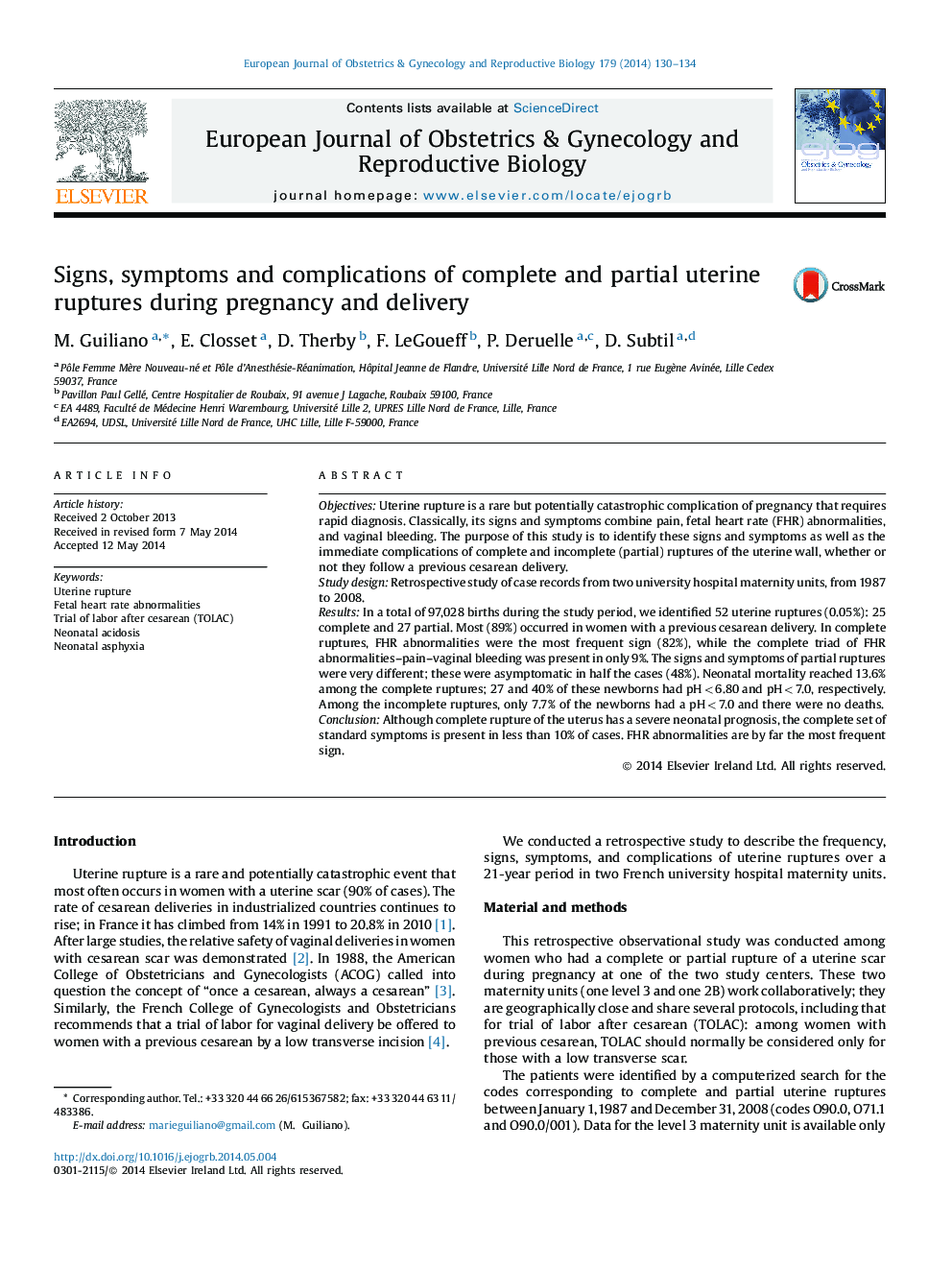| Article ID | Journal | Published Year | Pages | File Type |
|---|---|---|---|---|
| 6173800 | European Journal of Obstetrics & Gynecology and Reproductive Biology | 2014 | 5 Pages |
ObjectivesUterine rupture is a rare but potentially catastrophic complication of pregnancy that requires rapid diagnosis. Classically, its signs and symptoms combine pain, fetal heart rate (FHR) abnormalities, and vaginal bleeding. The purpose of this study is to identify these signs and symptoms as well as the immediate complications of complete and incomplete (partial) ruptures of the uterine wall, whether or not they follow a previous cesarean delivery.Study designRetrospective study of case records from two university hospital maternity units, from 1987 to 2008.ResultsIn a total of 97,028 births during the study period, we identified 52 uterine ruptures (0.05%): 25 complete and 27 partial. Most (89%) occurred in women with a previous cesarean delivery. In complete ruptures, FHR abnormalities were the most frequent sign (82%), while the complete triad of FHR abnormalities-pain-vaginal bleeding was present in only 9%. The signs and symptoms of partial ruptures were very different; these were asymptomatic in half the cases (48%). Neonatal mortality reached 13.6% among the complete ruptures; 27 and 40% of these newborns had pHÂ <Â 6.80 and pHÂ <Â 7.0, respectively. Among the incomplete ruptures, only 7.7% of the newborns had a pHÂ <Â 7.0 and there were no deaths.ConclusionAlthough complete rupture of the uterus has a severe neonatal prognosis, the complete set of standard symptoms is present in less than 10% of cases. FHR abnormalities are by far the most frequent sign.
